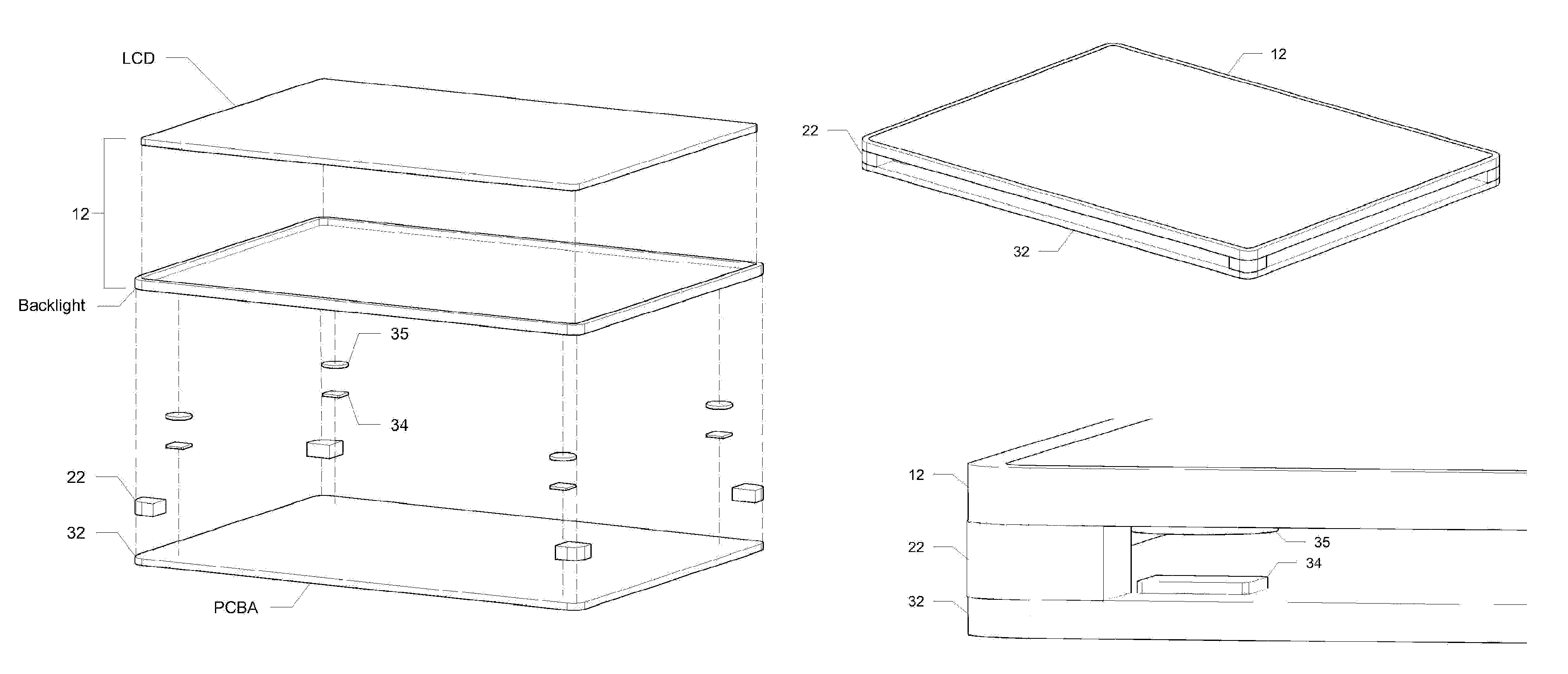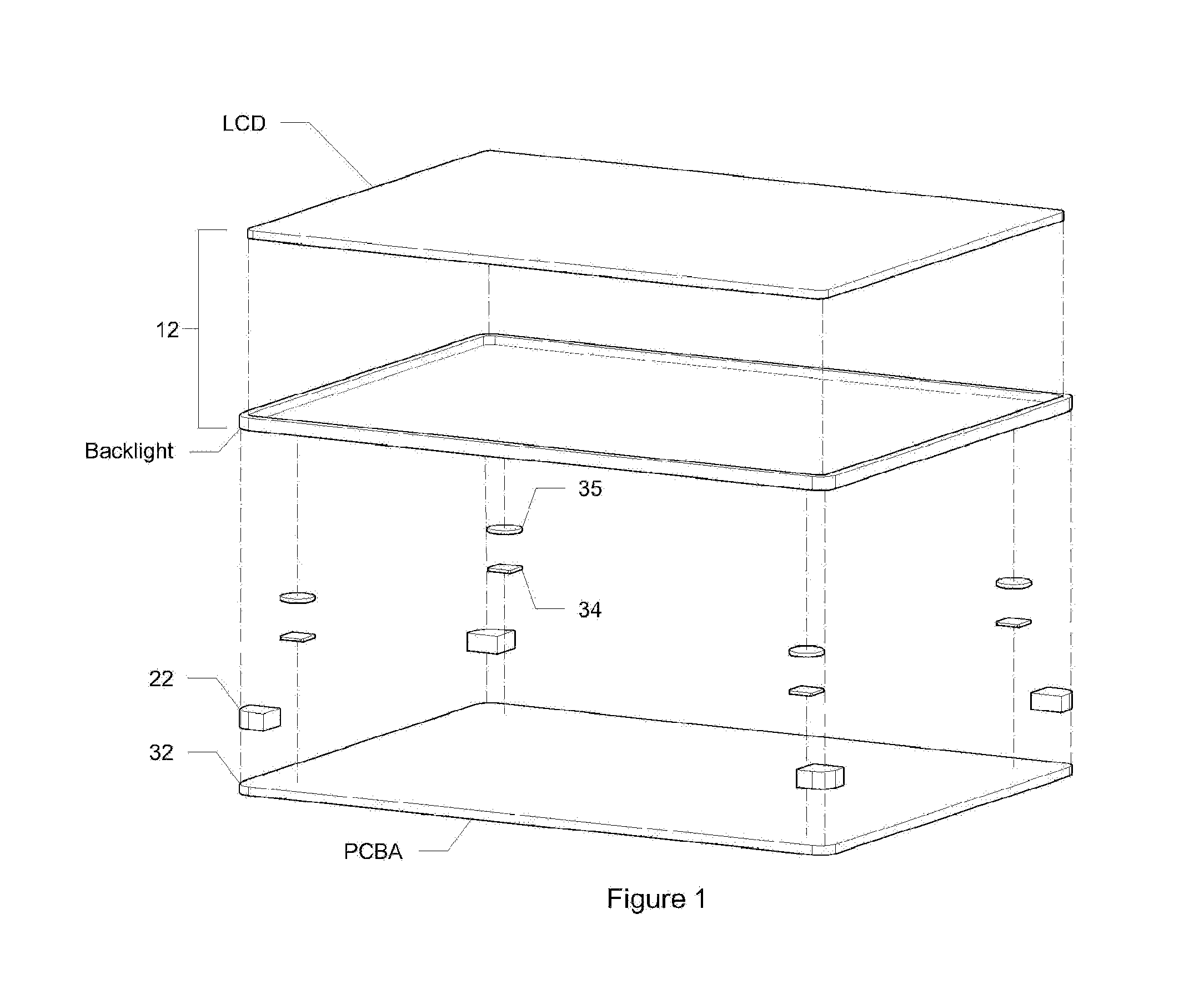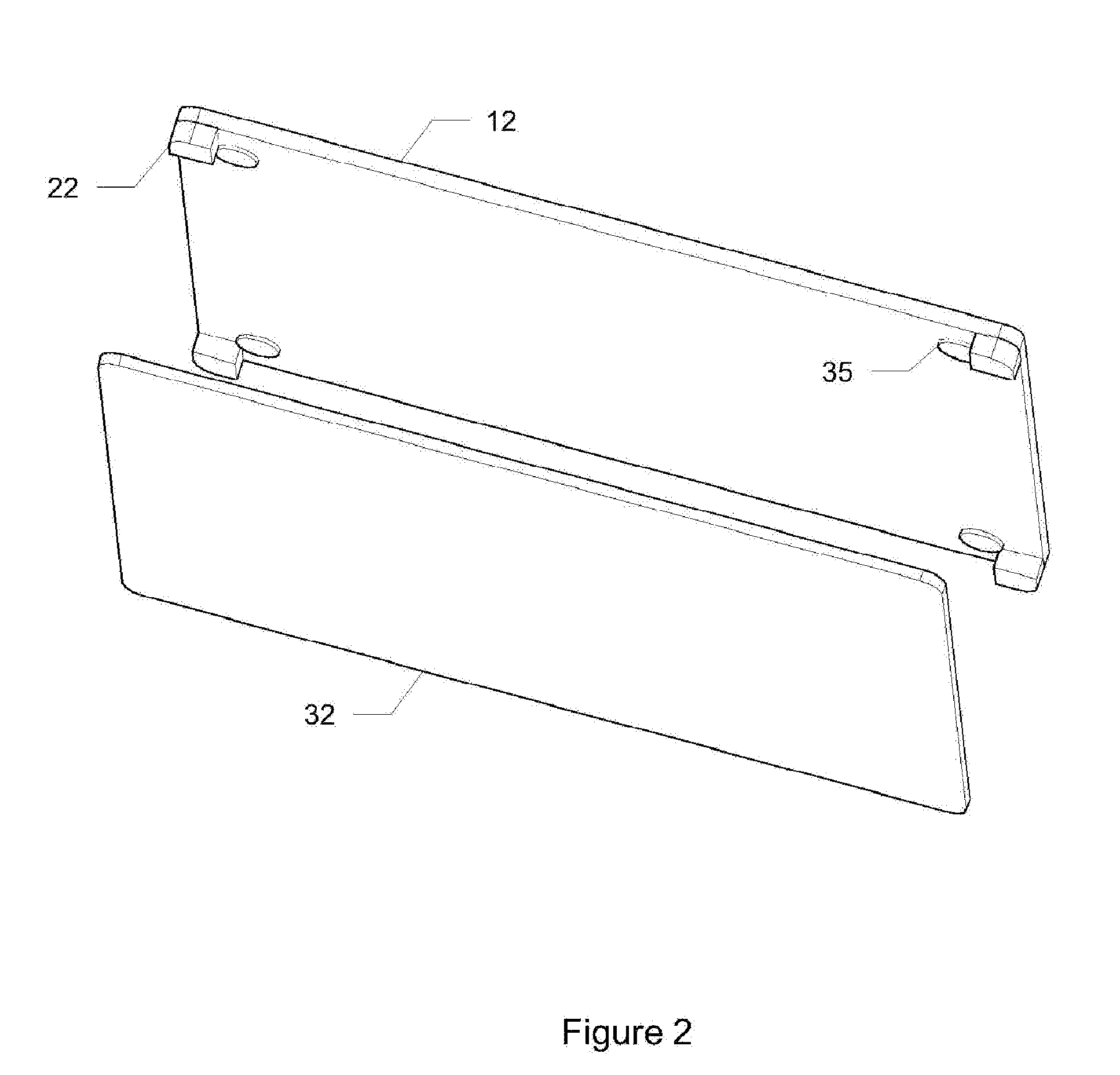Floating plane touch detection system
a detection system and floating plane technology, applied in the field of floating plane touch detection system, can solve the problems of not being on the market any longer, devices that have never achieved commercial success, and are not easy to detect, etc., to achieve accurate, sensitive, compact and low-cost solution, and mitigate xy friction. , the effect of improving the detection of z-forces
- Summary
- Abstract
- Description
- Claims
- Application Information
AI Technical Summary
Benefits of technology
Problems solved by technology
Method used
Image
Examples
Embodiment Construction
[0011]The floating plane system introduced here uses a flexible mounting material (medium) to suspend or “float” the touch surface in a manner that accommodates XY friction and improves detection of the Z-force.
[0012]It provides for wider “co-planar” tolerances, simplifying the manufacturing process. For example, a plane is defined by three points, while typical touch screens are mounted at four corners, and in ever-thinner designs. Thinner designs dictate ever-smaller touch deflection differences. Any design attempting to separate touch and sensor planes at four points must calibrate those four mounting points (frequently force sensors) with extreme precision, making the necessary tolerances increasingly manufacturing-intensive.
[0013]It uses non-contact sensors that measure the vertical displacement of the touch surface, again diminishing unwanted lateral forces usually present in force-based devices.
The system can adapt existing planes within a typical LCD display assembly, and av...
PUM
 Login to View More
Login to View More Abstract
Description
Claims
Application Information
 Login to View More
Login to View More - R&D
- Intellectual Property
- Life Sciences
- Materials
- Tech Scout
- Unparalleled Data Quality
- Higher Quality Content
- 60% Fewer Hallucinations
Browse by: Latest US Patents, China's latest patents, Technical Efficacy Thesaurus, Application Domain, Technology Topic, Popular Technical Reports.
© 2025 PatSnap. All rights reserved.Legal|Privacy policy|Modern Slavery Act Transparency Statement|Sitemap|About US| Contact US: help@patsnap.com



